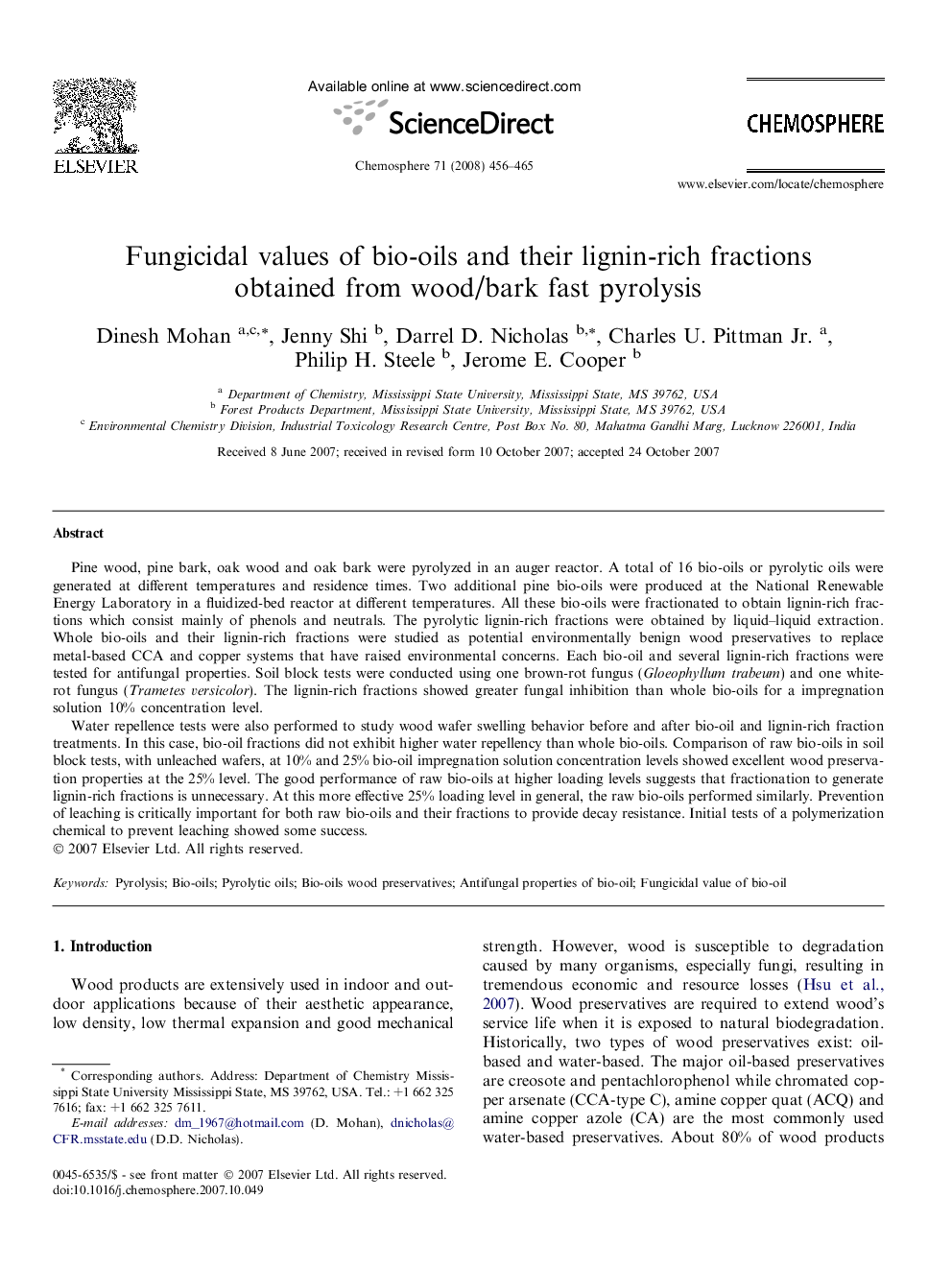| کد مقاله | کد نشریه | سال انتشار | مقاله انگلیسی | نسخه تمام متن |
|---|---|---|---|---|
| 4414759 | 1307725 | 2008 | 10 صفحه PDF | دانلود رایگان |

Pine wood, pine bark, oak wood and oak bark were pyrolyzed in an auger reactor. A total of 16 bio-oils or pyrolytic oils were generated at different temperatures and residence times. Two additional pine bio-oils were produced at the National Renewable Energy Laboratory in a fluidized-bed reactor at different temperatures. All these bio-oils were fractionated to obtain lignin-rich fractions which consist mainly of phenols and neutrals. The pyrolytic lignin-rich fractions were obtained by liquid–liquid extraction. Whole bio-oils and their lignin-rich fractions were studied as potential environmentally benign wood preservatives to replace metal-based CCA and copper systems that have raised environmental concerns. Each bio-oil and several lignin-rich fractions were tested for antifungal properties. Soil block tests were conducted using one brown-rot fungus (Gloeophyllum trabeum) and one white-rot fungus (Trametes versicolor). The lignin-rich fractions showed greater fungal inhibition than whole bio-oils for a impregnation solution 10% concentration level.Water repellence tests were also performed to study wood wafer swelling behavior before and after bio-oil and lignin-rich fraction treatments. In this case, bio-oil fractions did not exhibit higher water repellency than whole bio-oils. Comparison of raw bio-oils in soil block tests, with unleached wafers, at 10% and 25% bio-oil impregnation solution concentration levels showed excellent wood preservation properties at the 25% level. The good performance of raw bio-oils at higher loading levels suggests that fractionation to generate lignin-rich fractions is unnecessary. At this more effective 25% loading level in general, the raw bio-oils performed similarly. Prevention of leaching is critically important for both raw bio-oils and their fractions to provide decay resistance. Initial tests of a polymerization chemical to prevent leaching showed some success.
Journal: Chemosphere - Volume 71, Issue 3, March 2008, Pages 456–465